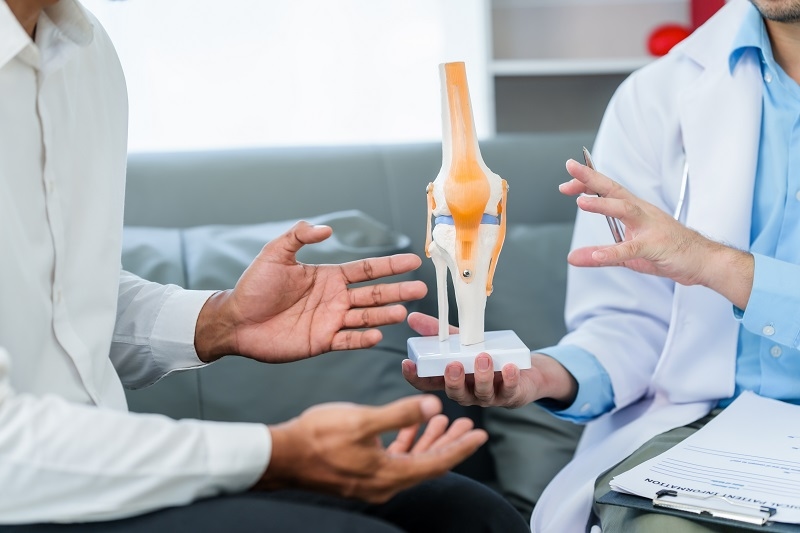
Even though arthritis makes life difficult, it can be a major difference if you know and practice the right things daily. Learning about arthritis is not only about recognizing the signs of the disease, but it is also about learning pain management, protecting joint health, and making lifestyle choices that would correspond with a therapist in the long run. When patients learn about their disease and actively change their habits, they can experience enhanced mobility, less pain, and expanded lifestyles.
This blog is a journey through the arthritis education and health condition awareness that might help a patient take control of their health.
Arthritis is a long-lasting condition that causes one or several joints to be inflamed. It usually causes the affected area to be stiff, swollen, and painful, and thus the patient may find it hard to perform everyday activities. The most common types are osteoarthritis, rheumatoid arthritis, and gout. Every type has its causes, but all may lead to decreased movement and total living quality of a person.
Knowing the disease early on is the starting point for an effective therapy for arthritis. Patients who begin to feel joint pain that persists for several weeks, morning stiffness, or limited joint movement must visit a doctor without delay. With the condition being diagnosed at its early stage, it becomes easier to contain the problem and also lessen its spread.
The ability of education to be a major factor in the management of arthritis is remarkable. When patients comprehend their condition, they are enabled to make knowledgeable decisions about treatment, lifestyle, and self-care. Proper education about arthritis equips people with the ability to:
Without the necessary awareness, they may aggravate symptoms in such a way that they do it without knowing by pushing further than the pain allows, not moving as they ought to, or using joints in a manner that puts more pressure on them.
One of the most crucial things in treating arthritis is caring for the joints. Joint care should be a daily routine since the disease affects the body's ability to move smoothly. Some steps that patients can take are:
Within the scope of arthritis education, patients get to the point that is a balance—movement keeps joints active, but overdoing it may give a setback.
Lifestyle changes are necessary to keep a chronic condition under control. Even though medication and therapy are successful, it is the daily habits that tell if life with arthritis will be less challenging or not. Some patients' lifestyle practices that can bring changes are as follows:
Consuming foods that are healthy for joints and lower inflammation would be a great place to start. Dieticians suggest eating plenty of fruits, vegetables, whole grains, and omega-3 fatty acids. Patients should cut down on processed foods, sugary drinks, and the intake of red meat.
Having more weight than the normal can result in the joints taking more pressure, especially the knees and hips. A gradual weight loss program that can reduce the pain and, hence, improve mobility will do wonders.
The importance of movement is difficult to overstate. Gently stretching, yoga, and low-impact exercises are critical to flexibility, circulation, and muscle strength. For the patient, it is more important to work on regular exercise rather than worry about the extent of movement.
Stress can worsen arthritis flare-ups. Breathing exercises, meditation, and enjoyable hobbies may help calm your mind and reduce the severity of flare-ups.
Both smoking and excessive alcohol consumption can enhance inflammation and delay healing. Making healthier lifestyle choices can not only improve our overall health but, in multiple ways, can also make arthritis easier to manage.

Since arthritis is often accompanied by pain, effective pain management is thus a crucial skill. Apart from drugs, patients can also turn to safe home prescriptions to get relief:
Education on arthritis stresses that pain management is individualized- what is effective for one may not necessarily be the case with another. Patients should test different approaches and record what is most helpful to them.
The retention of mobility is one of the major problems that arthritis sufferers have to deal with. Routine tasks such as going up stairs, cooking, or even dressing may be too much for them. Patients can, through the use of some helpful mobility tips, make their lives less difficult:
By making use of the mobility tips that have been given, the patients will be able to continue living on their own without being dependent on others and carrying out their daily routines with enhanced comfort.
Arthritis not only physically affects the sufferer's body but also has an impact on their mind. The presence of a chronic ailment can at times result in the patient's feeling of frustration, anxiety, or even depression. Changes in the patients' lifestyle should not only be confined to emotional health alone, but also include it:
Emotional well-being is the focal point of arthritis education. Patients who undergo mental health care often find it easier to handle physical symptoms.
Awareness of the condition should not only be among the patients. Relatives, employers, and other members of the community also need to be familiar with arthritis in order to offer assistance to those who have it. Making people aware is helping eliminate the stigma, which is one of the barriers to the support of the patients, and makes them feel understood.
Along with this, the comfort of patients with public campaigns, workplace accommodations, and social support systems occurs when those patients are no longer afraid of facing the world.
Arthritis is a long-term condition that requires awareness, patience, and diligent self-care. Understanding one's arthritis and what is fair will help the patient not only manage the symptoms but will also maintain joint safety and change their lifestyle for long-lasting health. Daily life may be more enjoyable in ways, such as maintaining a modifiable nutrition strategy, utilizing mobility tips, and testing pain measures.
Thus, by sharing and working together to spread the word, we can help ensure that those living with arthritis can continue to live active and fulfilling lives.
This content was created by AI